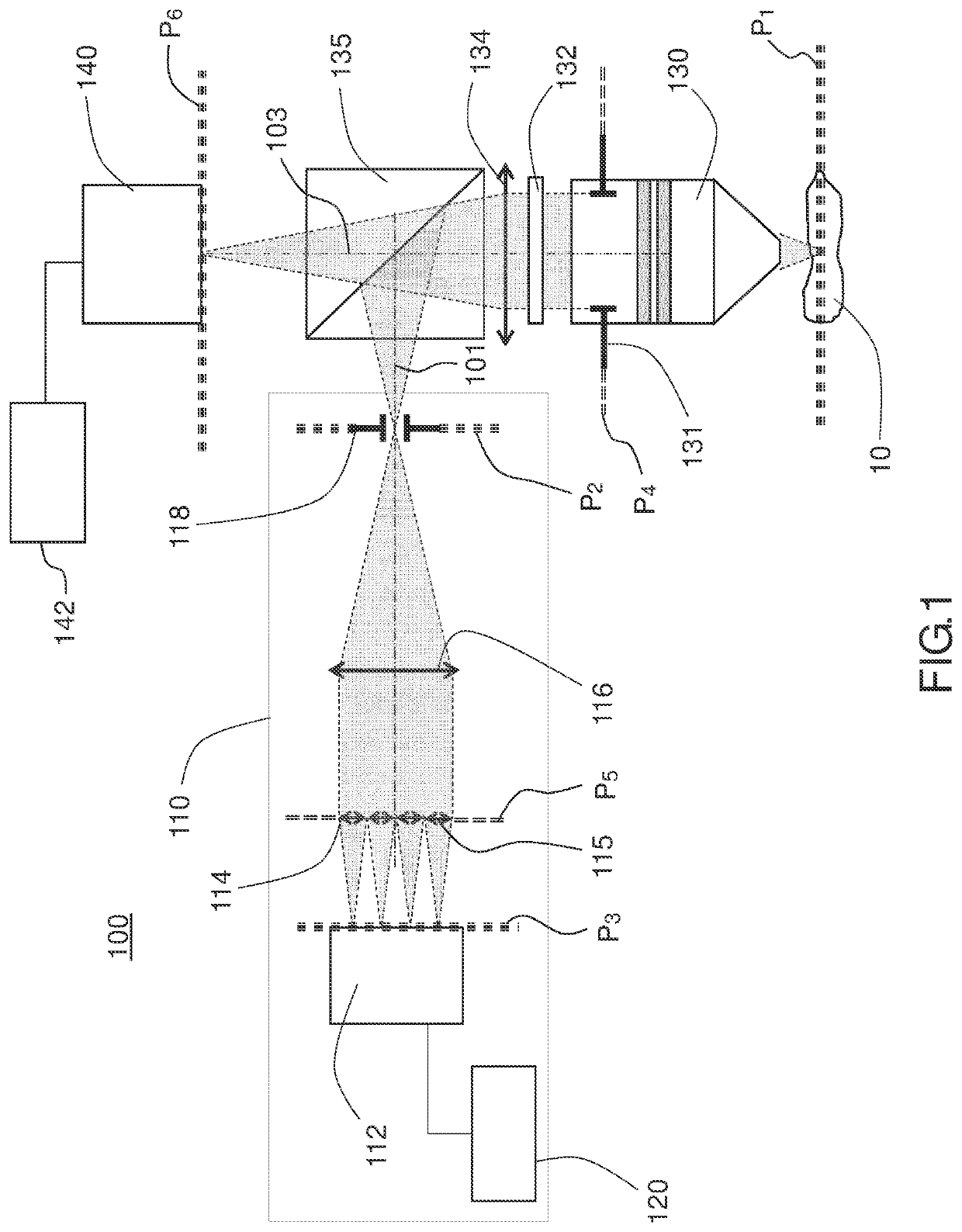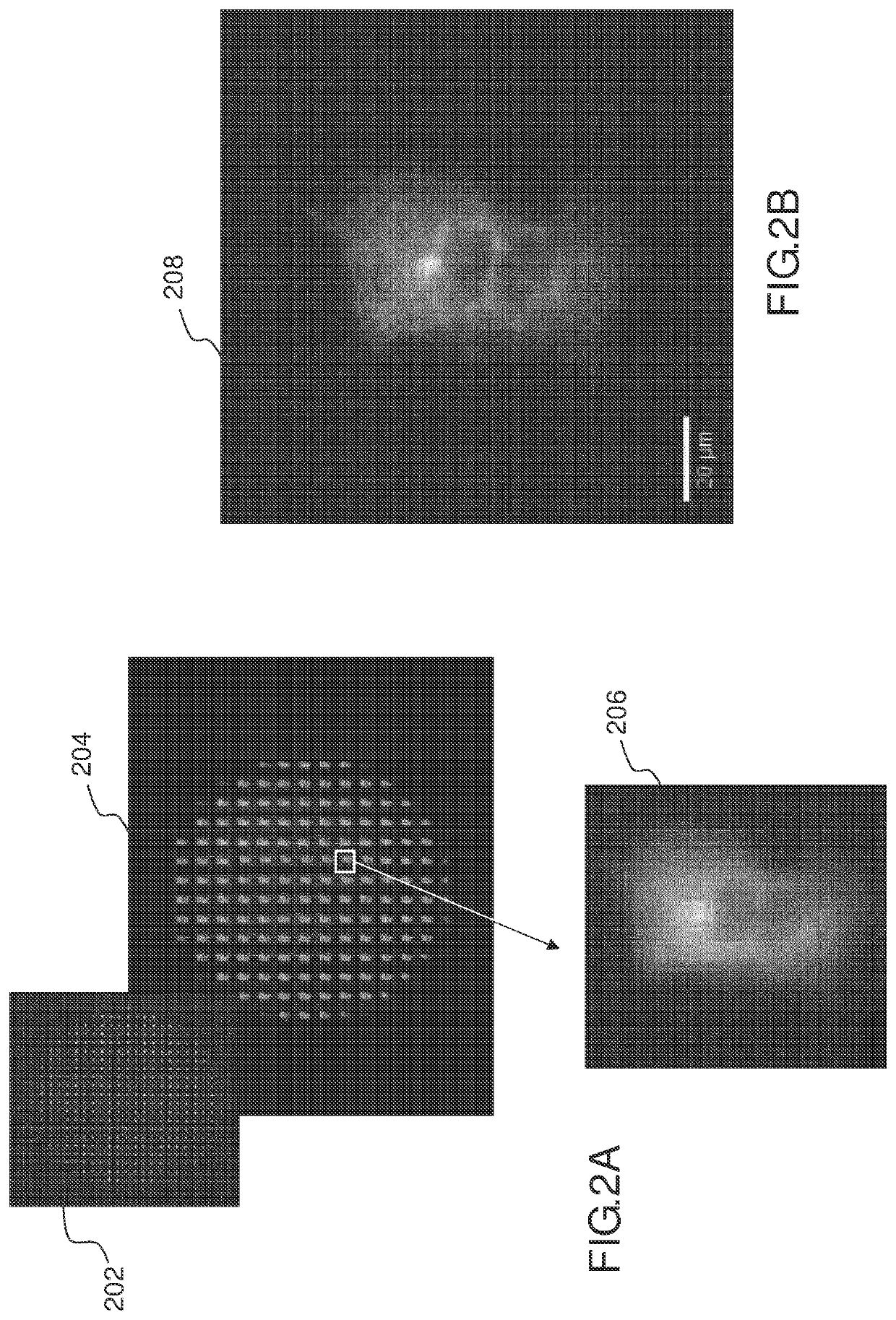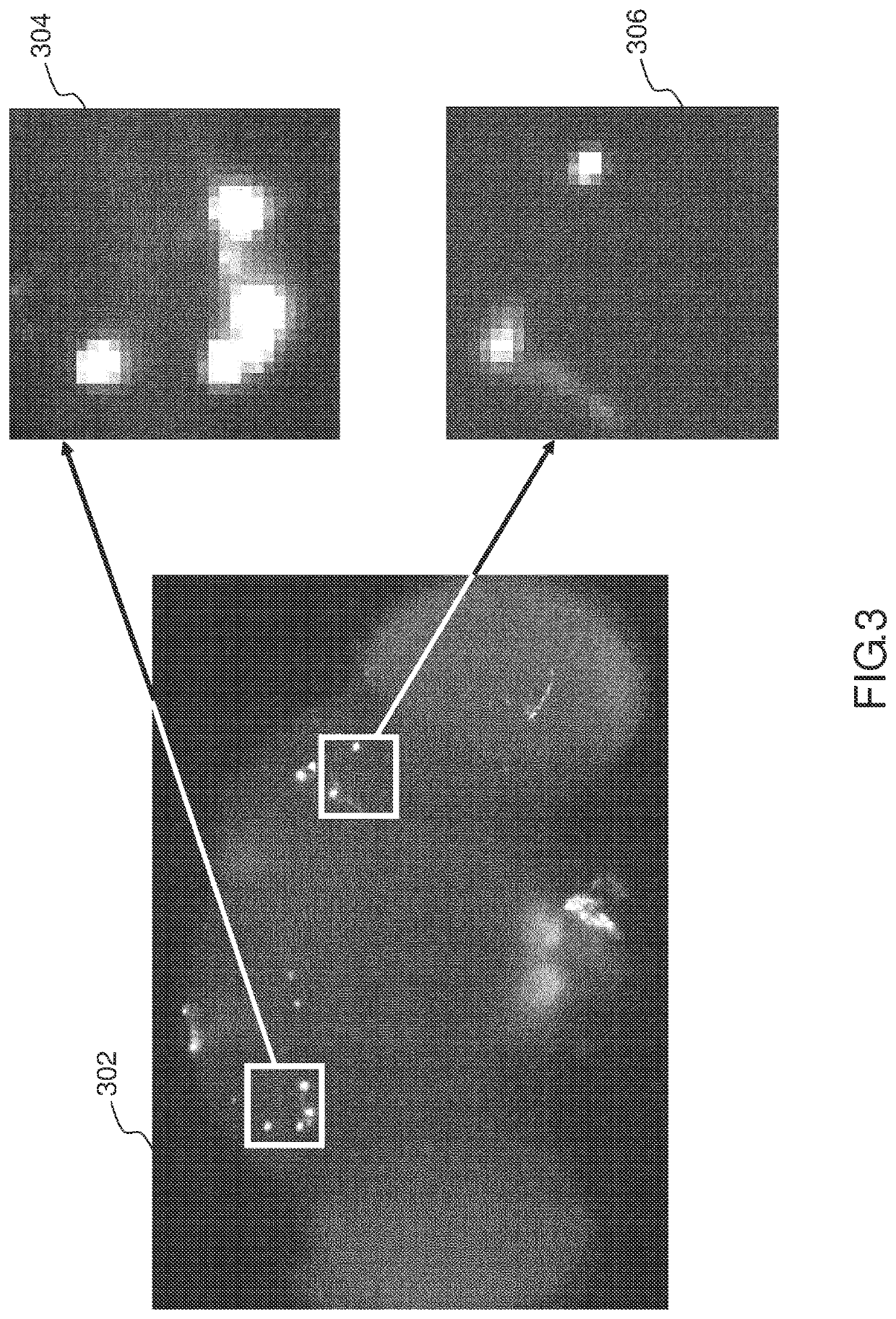Device for wavefront analysis and microscopic imaging systems comprising such analysis devices
a wavefront analysis and microscopic imaging technology, applied in the direction of optical radiation measurement, fluorescence/phosphorescence, instruments, etc., can solve the problems of convergence reliability, difficult implementation of direct measurement of optical defects, and complex implementation of approaches in microscopic imaging, so as to improve the intercorrelation between images
- Summary
- Abstract
- Description
- Claims
- Application Information
AI Technical Summary
Benefits of technology
Problems solved by technology
Method used
Image
Examples
Embodiment Construction
[0098]FIG. 1 schematically illustrates an example of a wavefront analysis device 110 according to the present description, connected to a fluorescence microscopic imaging system 100 with optical sectioning.
[0099]The fluorescence microscopic imaging system 100 with optical sectioning comprises an illumination path (not shown in FIG. 1) for illuminating an optical section of a volumetric and fluorescent object 10.
[0100]The microscopic imaging system 100 also comprises an imaging path 103 and an analysis path 101 comprising the wavefront analysis device 110.
[0101]The imaging path 103 comprises, in the example of FIG. 1, a microscope objective lens 130 comprising a pupil 131 in a pupil plane P4, a focusing optic 134, a fluorescence filter 132, an imaging detector 140 comprising a detection plane P6, a processing unit 142 for processing signals acquired by the detector 140.
[0102]Depending on the type of microscopic imaging system (for example, light-sheet or multiphoton), the imaging det...
PUM
| Property | Measurement | Unit |
|---|---|---|
| size | aaaaa | aaaaa |
| size | aaaaa | aaaaa |
| focal distance | aaaaa | aaaaa |
Abstract
Description
Claims
Application Information
 Login to View More
Login to View More - R&D
- Intellectual Property
- Life Sciences
- Materials
- Tech Scout
- Unparalleled Data Quality
- Higher Quality Content
- 60% Fewer Hallucinations
Browse by: Latest US Patents, China's latest patents, Technical Efficacy Thesaurus, Application Domain, Technology Topic, Popular Technical Reports.
© 2025 PatSnap. All rights reserved.Legal|Privacy policy|Modern Slavery Act Transparency Statement|Sitemap|About US| Contact US: help@patsnap.com



